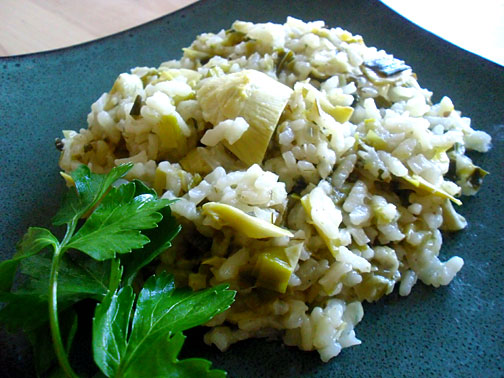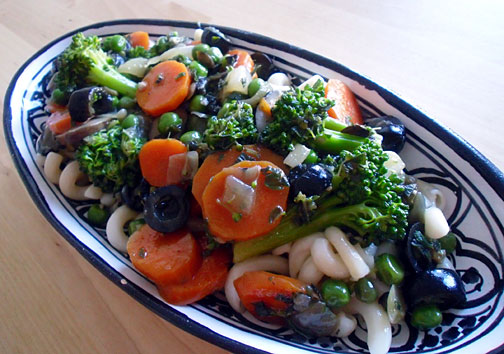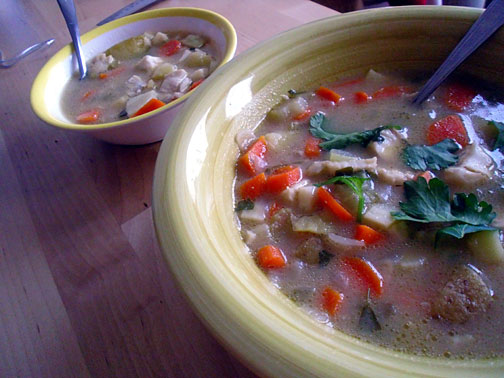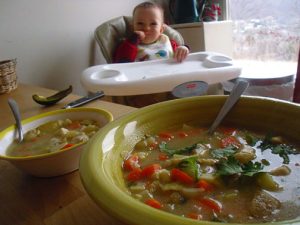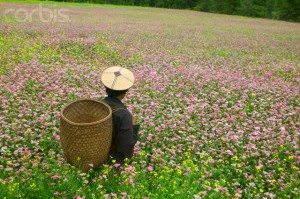
Farmer in a buckwheat field
Yes, it’s the middle of winter, so I feel somewhat strange writing about “the bountiful harvest.” It feels more appropriate to be writing about such things towards the end of summer when there is truly a bountiful harvest of fruits and vegetables.
But maybe that is why I’m writing about it now. A little reminder of what exists, grows and blooms on this place we call home, the earth. Even now, the seeds that will soon sprout into plants are simply taking a rest. We don’t see them so it is easier to forget that they are there.
Then when spring comes, it is always a miracle to watch the earth slowly turn green and the plants start to blossom. This is of course less noticeable in places that are more temperate, but this process this occurs.
What inspired this little post is my continued work on my cookbook (name still to be determined) where I am writing all about the ways one can substitute while cooking when following a diet limited to any of the following: wheat, gluten, dairy, soy, sugar, egg, nightshade veggies, grains, corn, meat, seafood, yeast and so on. I recently wrote about the different ingredients one could use if following a grain-free diet. If you haven’t heard this term before, it may at first appear very limiting.
It is actually quite opposite. People on a grain-free diet can still eat a rich diet of carbohydrates found in foods such as quinoa, amaranth, buckwheat, tapioca, potato, as well as high-protein flours made from beans and nuts. Quinoa, amaranth and buckwheat are technically seeds, and therefore can be eaten by a person on a grain-free diet. These “grains” can be ground into flours, or cooked as is, to create bread and other nutritious dishes. Almond, coconut and hazelnut flours can also be used to create baked goods that are just as good as those made with wheat.
For anyone on a limited diet, it can at first appear that there is nothing you can eat to replace what you used to eat on a regular basis. But when one is willing to venture into what I’d like to call the “bountiful harvest” of the earth, there are many foods that can be used to substitute and create new and wonderful dishes.
Furthermore, it seems to me that most people stick to just a handful of foods that they eat on a regular basis. Take one of these out due to food allergies or another condition and a person may become lost as to what to prepare. I think this is mostly due to the fact that the alternative grains, seeds, fruits and vegetables are not used in most of today’s processed foods. Unfortunately, wheat, soy, dairy and corn are used almost exclusively over many other alternatives.
But this is where we have to use a bit of our creativity and a little investigation to discover some new foods and ways to create new and delicious dishes. And you might be surprised, that the more you look, the more you will find! The following recipe is an excellent example of how one can create a wonderful dish that is free of common allergens. Enjoy!
Buckwheat or Quinoa Crepes
(Dairy, wheat, gluten, grain, egg, sugar, corn and soy free)
Recipe from www.grainfreeliving.com
Dry ingredients:
1 cup buckwheat or quinoa flour, or combination of the two
1/3 cup pure Potato Starch
1/2 tsp cream of tartar
1 tsp baking soda
pinch salt
Wet ingredients:
1 Tbsp olive oil
1/2 tsp apple cider vinegar
Enough filtered water to make mixture a runny cream consistency. (I used about 1 ½ cups)
1 egg (optional – they taste great without it).
Steps:
- Combine dry ingredients well. Add water and mix well. Add Oil and vinegar last. Let sit for as long as possible – overnight will produce the best flavor, but it is OK to use right away.
- Pour into non-stick fry pan as you would a crepe – and cook until brown. (the second side does not brown in the same way as the first)
- Fill with avocado and salad with a drizzle of vinaigrette and seasonings of choice. You can also add some slices of cooked meat or any other filling of choice – really yummy!!! We love them as just pancakes – add butter, maple syrup, coconut butter, almond butter, jams, etc and enjoy!
